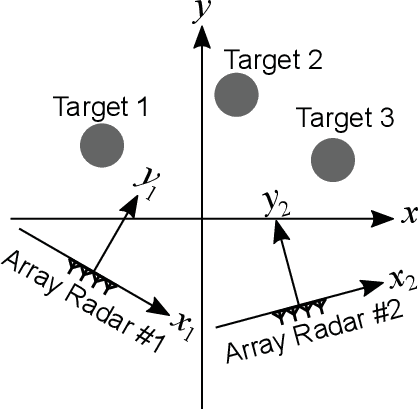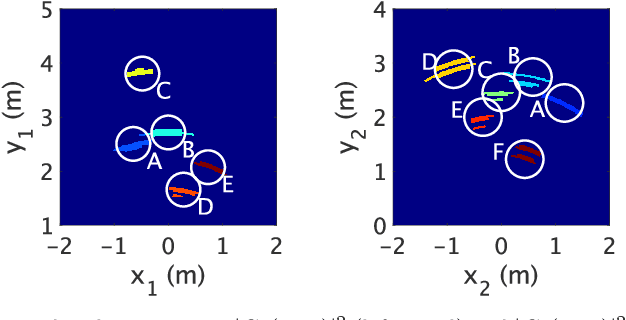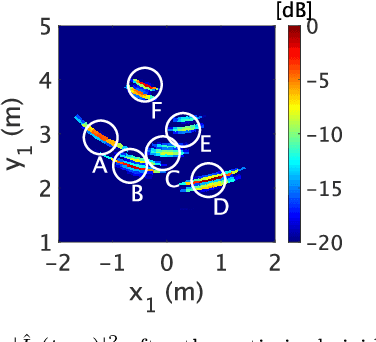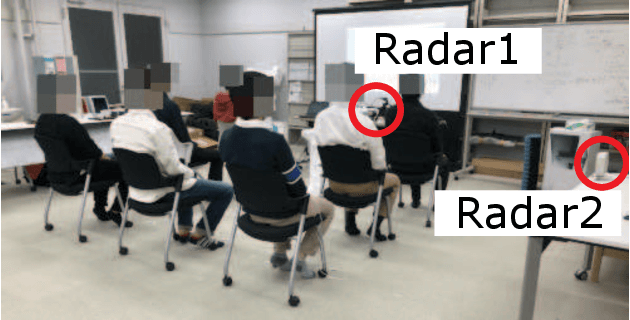Takato Koda
Noncontact Detection of Sleep Apnea Using Radar and Expectation-Maximization Algorithm
Nov 02, 2023



Abstract:Sleep apnea syndrome requires early diagnosis because this syndrome can lead to a variety of health problems. If sleep apnea events can be detected in a noncontact manner using radar, we can then avoid the discomfort caused by the contact-type sensors that are used in conventional polysomnography. This study proposes a novel radar-based method for accurate detection of sleep apnea events. The proposed method uses the expectation-maximization algorithm to extract the respiratory features that form normal and abnormal breathing patterns, resulting in an adaptive apnea detection capability without any requirement for empirical parameters. We conducted an experimental quantitative evaluation of the proposed method by performing polysomnography and radar measurements simultaneously in five patients with the symptoms of sleep apnea syndrome. Through these experiments, we show that the proposed method can detect the number of apnea and hypopnea events per hour with an error of 4.8 times/hour; this represents an improvement in the accuracy by 1.8 times when compared with the conventional threshold-based method and demonstrates the effectiveness of our proposed method.
Multiradar Data Fusion for Respiratory Measurement of Multiple People
Jul 24, 2021



Abstract:This study proposes a data fusion method for multiradar systems to enable measurement of the respiration of multiple people located at arbitrary positions. Using the proposed method, the individual respiration rates of multiple people can be measured, even when echoes from some of these people cannot be received by one of the radar systems because of shadowing. In addition, the proposed method does not require information about the positions and orientations of the radar systems used because the method can estimate the layout of these radar systems by identifying multiple human targets that can be measured from different angles using multiple radar systems. When a single target person can be measured using multiple radar systems simultaneously, the proposed method selects an accurate signal from among the multiple signals based on the spectral characteristics. To verify the effectiveness of the proposed method, we performed experiments based on two scenarios with different layouts that involved seven participants and two radar systems. Through these experiments, the proposed method was demonstrated to be capable of measuring the respiration of all seven people by overcoming the shadowing issue. In the two scenarios, the average errors of the proposed method in estimating the respiration rates were 0.33 and 1.24 respirations per minute (rpm), respectively, thus demonstrating accurate and simultaneous respiratory measurements of multiple people using the multiradar system.
Noncontact Respiratory Measurement for Multiple People at Arbitrary Locations Using Array Radar and Respiratory-Space Clustering
Feb 01, 2021



Abstract:In this study, we develop a noncontact measurement system for monitoring the respiration of multiple people using millimeter-wave ultrawideband array radar. To separate the radar echoes of multiple people, conventional techniques cluster the radar echoes in the time, frequency, or spatial domain. Focusing on the measurement of the respiratory signals of multiple people, we propose a method called respiratory-space clustering in which individual differences in the respiratory rate are effectively exploited to accurately resolve the echoes from human bodies. The proposed respiratory-space clustering can separate echoes, even when people are located close to each other. In addition, the proposed method can be applied when the number of targets is unknown and can accurately estimate the number of people and their positions. We perform measurements under two scenarios involving five and seven participants to verify the performance of the proposed method, and quantitatively evaluate the estimation accuracy of the number of people and the respiratory intervals. The experimental results show that the root-mean-square error in estimating the respiratory interval is 172 ms on an average. The proposed method improves the estimation accuracy of the number of people by 85.0% compared to the conventional method, demonstrating the high-precision measurement of the respiration of several people.
 Add to Chrome
Add to Chrome Add to Firefox
Add to Firefox Add to Edge
Add to Edge